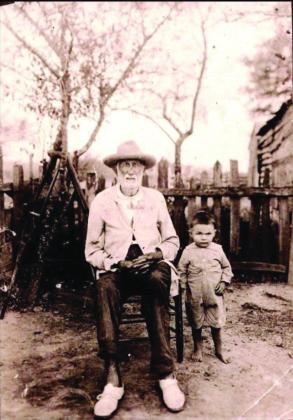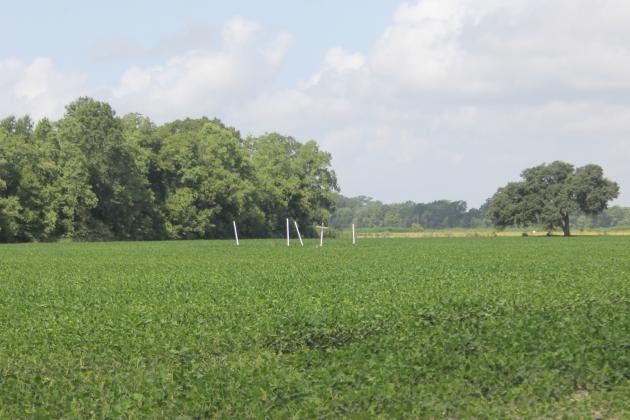By: TONY MARKS
Editor
Auguste Louis Jeansonne, who survived being a prisoner of war during the bloodiest conflict in American history, climbed up on his roof to fix a leak just four days shy of turning 112 years old. As he was fixing the leak, he fell off his roof and broke his hip. While he was recovering from his injuries, he caught pneumonia and died.
At the time of his death, he was reportedly the oldest living man in Louisiana, and news of his passage from this life spread from South Louisiana to the Midwest.
The Abbeville Progress, on April 14, 1923, reported, “Ville Platte, La., - Auguste Jeansonne, the oldest citizen of Evangeline parish and probably of Louisiana, died here. He would have been 112 years old in two more days. He was married three times. There are twenty-three children, seventeen of whom are still living, the eldest being 93 years old. He is survived by 137 grandchildren, the eldest of whom is 76 years old, and a great number of great-grandchildren and many great-great-grandchildren, many of whom he has never seen.”
The Nebraska State Journal similarly reported, on April 5, 1923, “VILLA PLATTE, La., April 4. - Auguste Jeansonne, who would have been one hundred and twelve years old tomorrow, died today. He was married three times and was the father of twenty-three children, of whom seventeen are living, the eldest being ninety-three years old. He is survived by 137 grandchildren.”
Jeansonne was then buried on a piece of property that he sharecropped in L’Anse Aux Pailles. Legend says he is buried in the center of the cemetery with family members on each side. As time went on, though, knowledge of the cemetery faded.
The location of the gravesite was unknown to family members until Don Fusilier, a great-great-grandson of Jeansonne, began researching the family records.
Fusilier, who has been a genealogist for the past 45 years, said, “My journey started with my family. As time went on, I learned more and more about Auguste, and, for years, I didn’t know where he was buried until one day I talked to the right person. They showed me exactly where he was buried.”
He went on to say, “Once I found the cemetery, I started inquiring about it. It’s in the middle of a field, and there’s no access road.”
Fusilier eventually made contact with the owner of the property but was given several guidelines. The family could not visit the gravesite during planting season or when the farmers were preparing to start planting.
Sharon Guidry, another family member said, “The family gets to go around the cemetery when they’re able to, but they have to park on the highway and cross the field near the canal and get to the location. It is marked off by four pieces of pipe and his cross.
“Access to the cemetery has been very limited over the years,” Fusilier said.
“It’s only recently that other family members contacted me about the cemetery. Then we started this group trying to get access. We’re wanting to maintain and even get a new headmarker for the graves.”
Guidry said, “As a group, we want to preserve the cemetery.”
Another family member, Carissa Morgan, has been knowing about the gravesite for the past three years and said the Facebook group shares new information as it is discovered “so that the rest of the descendants can know the same thing.”
Morgan said Jeansonne had 23 verified children but estimates that number is closer to 33. “We’re looking to find those unidentified children through DNA.”
While continuing to seek access to the gravesite and other family members, the family is also seeking more information on its ancestor to better separate fact from family legend.
Fusilier said, “We have proof he was married four times, but it is speculated he had at least two more wives because his first marriage was when he was 31 or 32 years old. That’s the first recorded marriage that we found. Back then, it was rare for somebody to be that old and never been married. We speculate he had another wife and possibly more children because the family story goes he had over 35 kids. And, he was married when he died.”
Guidry said she and a cousin are also looking into answers. “I ended up talking to Fr. Ken Domingue, who is also a descendant of Auguste, and he told me where to get the death record which is at Our Lady of Mount Carmel in Chataignier,” she said. “Bishop Jules Jeanmard is the one who signed the death record, and it was written in Latin.”
According to Guidry, one of her cousins is working on getting a plaque to recognize Jeansonne as a Confederate soldier. “She’s going to sign up with the Daughters of the Confederacy to be able to get his documentation.”
As more is learned about Jeansonne, controversy grows. Fusilier said, “There is some controversy about his birth. I have April 7, 1811, as his date of birth and April 4, 1923, and his date of death. There are several people who want to argue his date of birth and say he wasn’t born until 1816 or 1818. As a genealogist, you can’t just put names and dates on a piece of paper. It has to be documented proof to be worth its salt.”
Going forward, the family hopes to learn the full scope of the cemetery by using sonar and other archaeological methods in order to preserve it and to get some sort of closure.
“When we rediscover our ancestors and they’re buried in a normal public cemetery, we’re allowed to go visit and pay our respects to where we came from,” Morgan said. “With Auguste being on private land, it causes a lot of confusion and hardship to be able to visit.”
She continued, “I think I speak for everyone in the family when I say that we would like to visit our grandpa. There are so many of us that we all know the story and want to get closure to where we can visit grandpa.”
Fusilier concluded, “Unless we can come to an agreement with the landowner and the farmer who is leasing the land, I don’t see that we’ll ever get closure. To me, closure would be having access to the cemetery year round and being able to identify exactly how many more graves are out there. That would be my closure.”
- Log in to post comments


